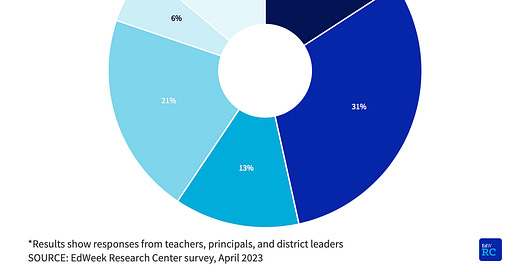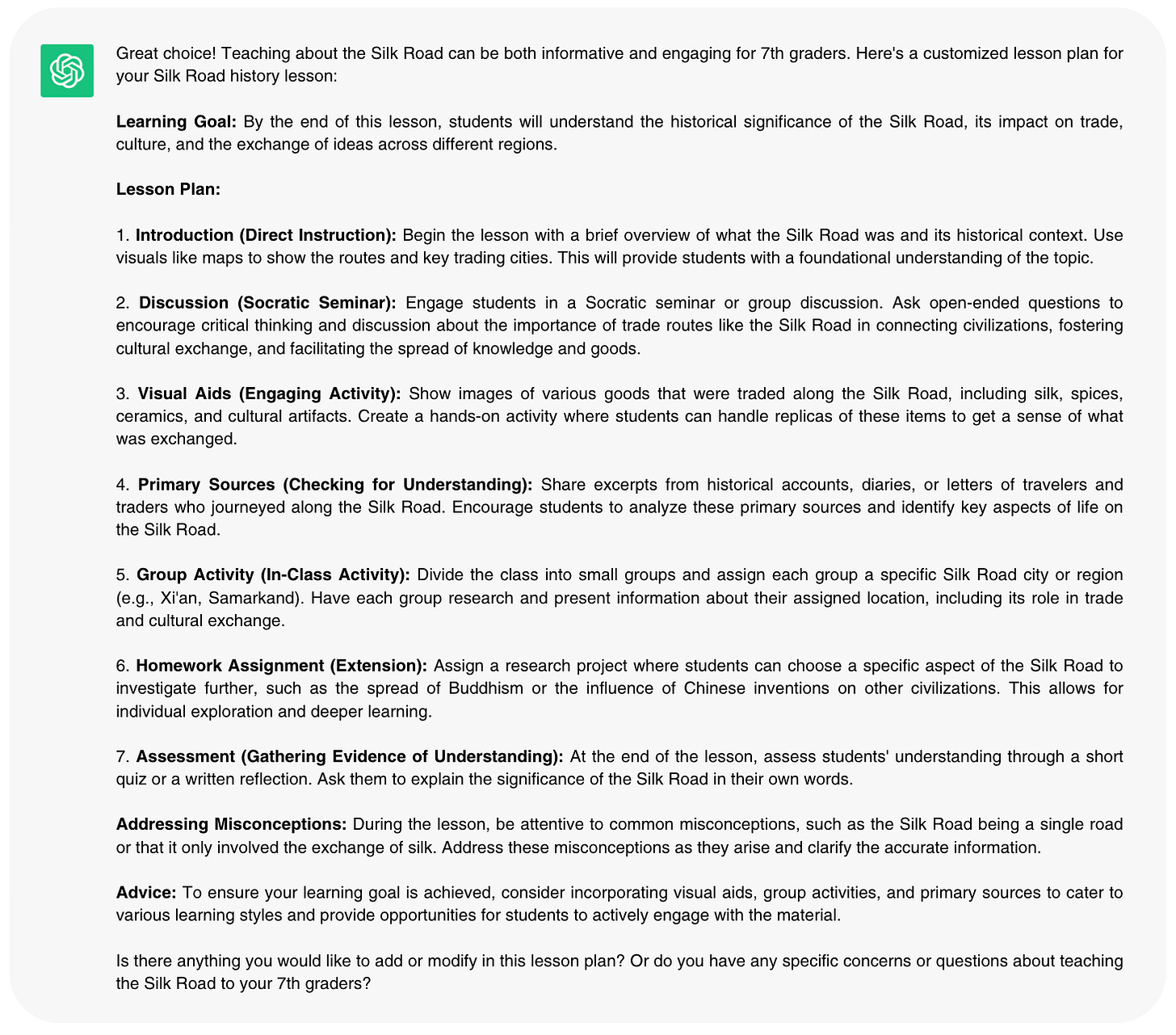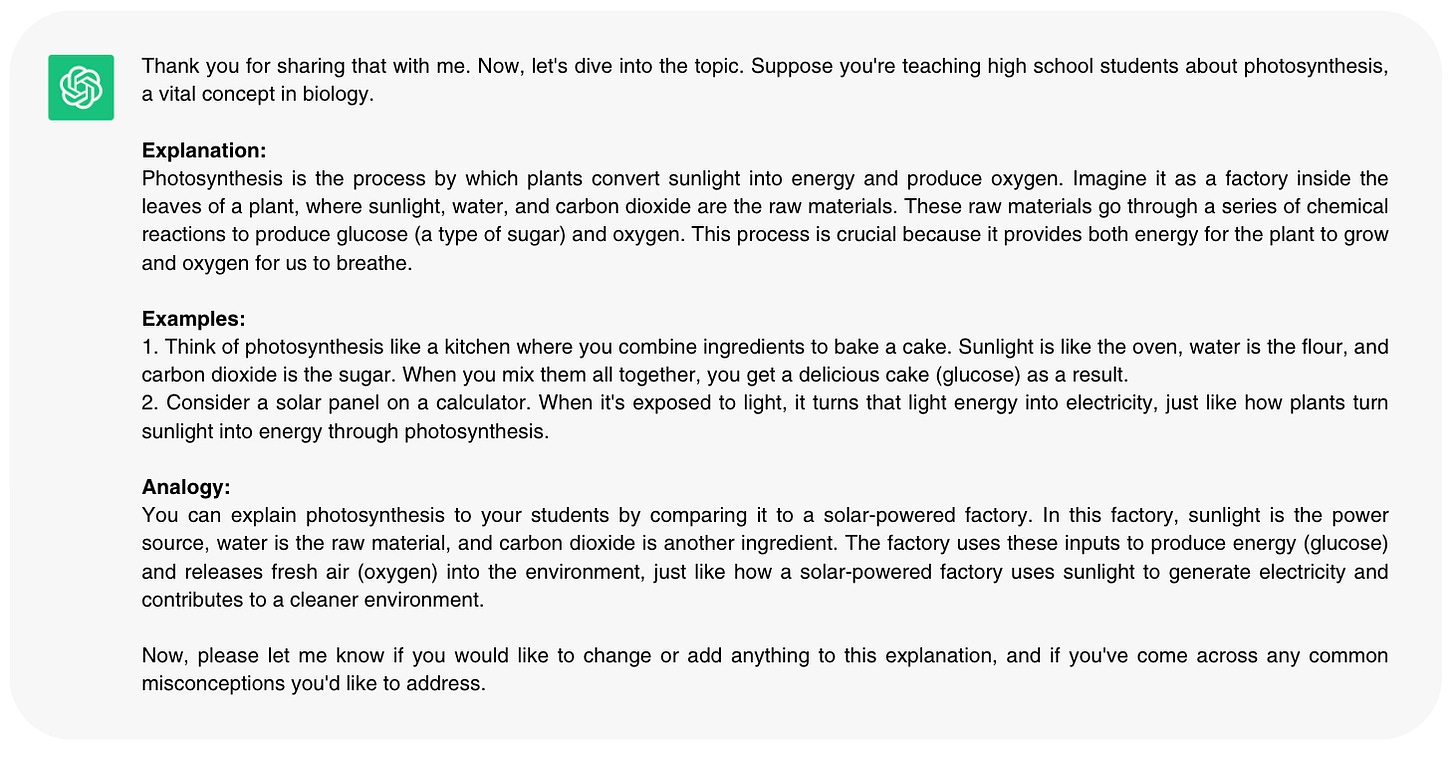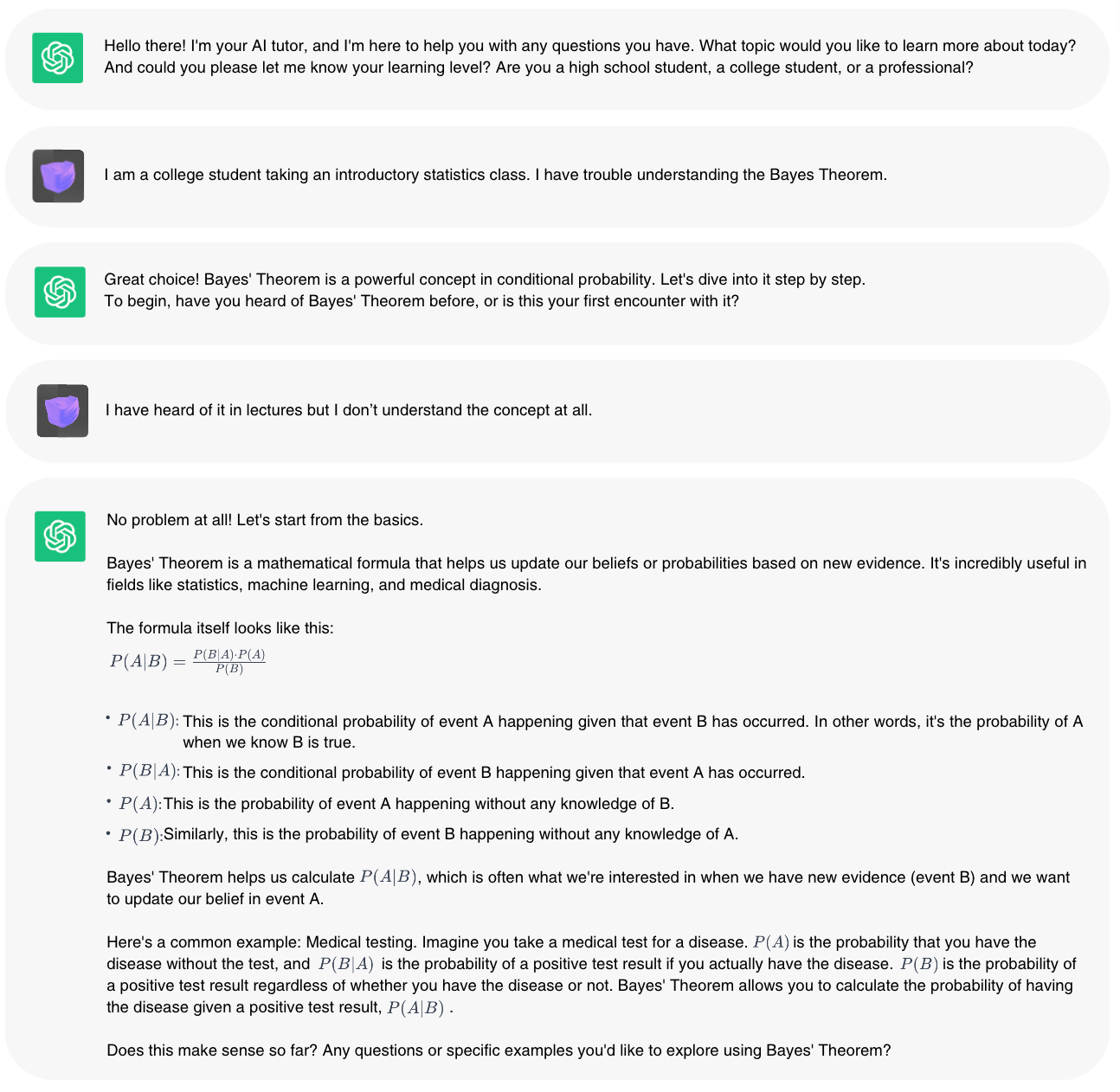🏫 Back-To-School Season with AI
Discover how AI is transforming the back-to-school experience in schools across the world.
Welcome to the first edition of the AI x Education newsletter! Our student team strives to help accelerate the safe and equitable adoption of AI in education with a student-centered approach. Through our newsletters, we look forward to sharing the latest information and resources on AI in education while incorporating student perspectives. Happy reading!
Let’s kick off the newsletter with a quick poll! As school is back in session, some educators are worried about how students might use AI-driven technologies like ChatGPT to cheat on school assignments, while others are embracing these tools to save time in responding to emails and creating lesson plans. Where do you stand?
Here is an overview of today’s email:
How schools are implementing AI this fall
Cautionary considerations for utilizing ChatGPT in the classroom
Generate lesson plans, resources, and even an AI tutor using ChatGPT
Students’ perspectives on AI usage and educator transparency
If you find this newsletter to be helpful, please consider sharing this free resource with others!
📰 In the News
The New York Times
How Schools Can Survive (and Maybe Even Thrive) With A.I. This Fall ↗️
Generative AI, particularly ChatGPT, has had a significant impact on the education system since its release last November. This article discusses how schools faced unexpected challenges as students began using AI for assignments and exams. Educators are encouraged to assume that most students are utilizing AI tools and adjust their teaching methods accordingly. The article also cautions against relying on unreliable AI detection tools and instead suggests focusing on understanding AI's capabilities. Furthermore, it advocates for educators to experiment with AI themselves. It advises treating the post-ChatGPT era as a valuable learning experience for schools, emphasizing the need to embrace innovative ways of integrating AI into the classroom rather than viewing it as an adversary.
EdWeek
What Educators Think about Using AI In Schools ↗️
Hear from educators across the United States on their perspective of using AI in schools. This article addresse both the challenges and opportunities of generative AI for academic integrity, assessment, learning, and teaching.
CBS News Baltimore
Schools, universities turning to artificial intelligence to transform education ↗️
Advancements in technology, particularly the rise of artificial intelligence (AI), are reshaping education in Baltimore and nationwide. AI tools can swiftly craft syllabi and lesson plans, offering educators more time for direct interaction with students, while also raising concerns about plagiarism detection. Some school districts, like Baltimore City Public Schools, are turning to AI for enhanced safety, while higher education institutions are introducing AI courses to prepare students for a tech-driven future. However, responsible and strategic AI implementation remains crucial, and experts emphasize the importance of informed decision-making by educators and institutions.
📝 Latest Research in AI + Education
The (mis)use of ChatGPT in science and education (Read the paper ↗️)
Key Takeaways:
ChatGPT can generate convincing but often inaccurate or fabricated texts, posing challenges for assessing students' work and for academic publishing.
Some universities in Australia are shifting back to pen-and-paper exams to prevent ChatGPT cheating, while others aim to incorporate it as a teaching aid.
Using ChatGPT to write essays is considered academic doping; it is unethical even if allowed at some institutions. In fact, it is occasionally referred to as “Ch(e)atGPT”.
ChatGPT cannot reliably pass a Turing test for scientific writing as it sometimes "hallucinates" fake facts and references.
There needs to be open debate on the complex ethical issues surrounding ChatGPT's potential (mis)use in academia and science.
Shaw, Morfeld, P., & Erren, T. (2023). The (mis)use of ChatGPT in science and education: Turing, Djerassi, “athletics” & ethics. EMBO Reports, 24(7), e57501–e57501. https://doi.org/10.15252/embr.202357501The Rise of ChatGPT and Generative A.I. and What it Means for Schools (Read the paper ↗️)
Key Takeaways:
Educators need to be aware of the capabilities and limitations of ChatGPT and other generative AI services and adapt their instructional and administrative practices accordingly, such as creating ethical standards, ensuring transparency and accountability, and fostering public awareness and education.
ChatGPT shows potential for educational use, such as creating classroom materials, lesson plans, rubrics, and IEP goals, as well as enhancing student creativity and critical thinking.
ChatGPT also has limitations and challenges, such as factual errors, ethical concerns, plagiarism risks, and lack of understanding of non-textual experiences or outcomes.
Fisk. (2023). The Rise of ChatGPT and Generative A.I. and What it Means for Schools. AASA Journal of Scholarship & Practice, 20(1), 37–.🚀 Practical AI Usage and Policies
OpenAI, the company that developed ChatGPT, has released their guide for teachers using ChatGPT in the classroom. (Access Teaching With AI Here ↗️). The guide provides examples of ways teachers are currently utilizing ChatGPT in their classes, and the FAQ section has some great answers to commonly asked questions from teachers! It also lists several suggested ChatGPT prompts created by Ethan Mollick and Lilach Mollick from Wharton Interactive. Below are the outputs we generated using some of these prompts, and we encourage you to try them out by clicking the “Start chat” button to access the exact prompt used to generate lesson plans, resources, and even an AI tutor!
Come up with a lesson plan (Start chat ↗️)
Ex) History Lesson on the Silk Road for 7th graders
Create effective explanations, examples, and analogies (Start chat ↗️)
Ex) Biology Lesson on Photosynthesis for High School Students
Create an AI Tutor (Start chat ↗️)
Ex) College student struggling to understand Bayes Theorem in Statistics class
📣 Student Voices
“I’ve used ChatGPT to assist my writing, whenever I am stuck with a thesis, or I’m stuck trying to get that last bit of reasoning out of a piece of evidence.”
- Parthiva T, senior at Doughtery Valley High School
“AI is already used in classrooms…It’s kind of hard to establish the idea that we should just completely eliminate any use of artificial intelligence…The prohibition of its use in the classroom is actually in what can in many ways drive that lack of understanding, right? If students right now have no view on how am I supposed to use AI, I don’t understand what hallucination is - I’m going to copy it and submit it in this part of many assignmnt of this project that was take home - because it was not established in the classroom, that is what in that case is driving the misuse of the tools themselves.”
- Sebastian R, senior at Commonwealth Governor’s School
“AI can elevate the creative potential of both the educators and the students with the support of arguably the most powerful machines ever created”
- Jan B, junior at Minerva University
And that’s a wrap! If you enjoyed our newsletter and found it helpful, please consider sharing this free resource with your colleagues, educators, administrators, and more.
Let us know which section of this newsletter was your favorite, and we will make sure to incorporate more content like it in future editions.









